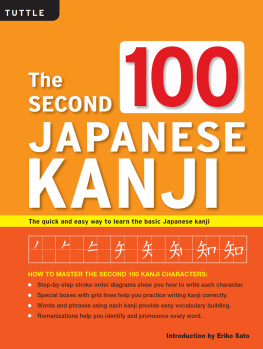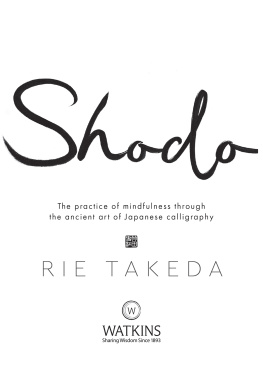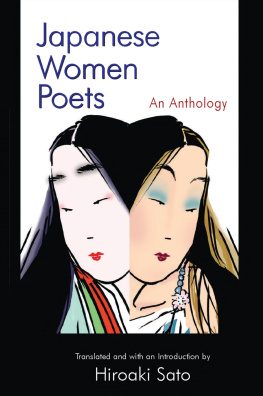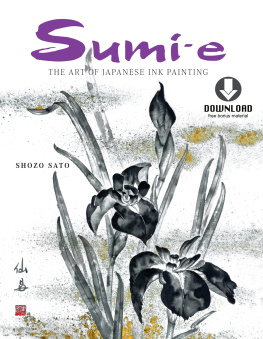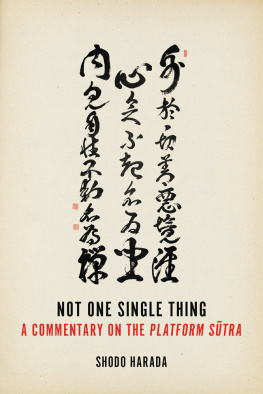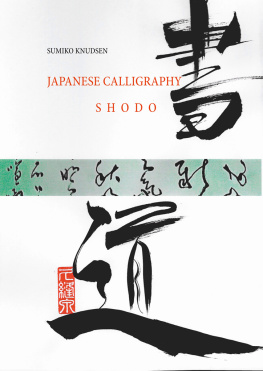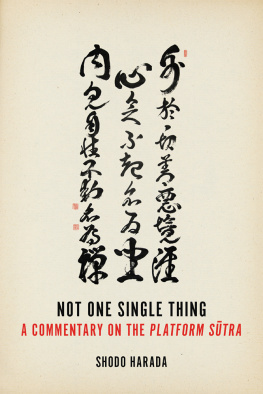Acknowledgments
This project would not have been possible without the expertise, support and generosity of many people, and I would like to thank them all very sincerely for helping to bring this book to fruition.
First and foremost, I would like to express my deepest gratitude to Gengo Akiba Roshi, Former Superintendent General of the Soto sect of Zen in North America, who served as advisor for the Zen statements included in this book. Although Akiba Roshi is currently deeply involved in a project to build an authentic Zen monastery in northern California, he made time to assist with the interpretation of some of the more difficult zengo . In addition, he provided many bokuseki for this book and gifted the Soto sect bokuseki that are reproduced in it. He also wrote a generous Foreword for the book.
The bokuseki from the Rinsai sect that appear in the book came from Keiundo of Asakusa, the second and third generation master craftsmen of the Aoki family. My tea ceremony mentor, Kosen Kishimoto, and a number of other friends kindly gave me ichigyo mono from their private collections.
I received great support for my activities concerning shodo at the university level and in the public domain from the late Eishi Sakuta, President of Naniwa Shodo Association, in Osaka, Japan, a longtime friend who supported my concept for this publication and was to have collaborated with me on it. His untimely death was a great loss to his family and friends and the many admirers of his work. His disciple, Shinya Fujiwara of Naniwa Shodo Association, artist and teacher, has been very helpful in providing technical support, especially in writing ideograms in kaisho for the lesson sections. He also provided the historical background for the Chinese ideograms.
I am grateful to my wife Alice who undertook the onerous task of assisting me in translating the manuscript into English.
Many people from the universities and from among the public at large, who have taken my classes over the years, have given me their support and encouragement in the compilation of this book and to them I give special thanks.
Finally, my thanks go to Eric Oey, Publisher and CEO of the Periplus Publishing Group, for undertaking the publication of my third book under the Tuttle imprint (the first two were Ikebana and Sumi-e ), to Senior Editor Sandra Korinchak, and to the staff in the Singapore office for handling the design and production of this book.
The Tuttle Story
Books to Span the East and West
Many people are surprised to learn that the worlds largest publisher of books on Asia had its humble beginnings in the tiny American state of Vermont. The companys founder, Charles Tuttle, came from a New England family steeped in publishing.
Tuttles father was a noted antiquarian dealer in Rutland, Vermont. Young Charles honed his knowledge of the trade working in the family bookstore, and later in the rare books section of Columbia University Library. His passion for beautiful booksold and newnever wavered throughout his long career as a bookseller and publisher.
After graduating from Harvard, Tuttle enlisted in the military and in 1945 was sent to Tokyo to work on General Douglas MacArthurs staff. He was tasked with helping to revive the Japanese publishing industry, which had been utterly devastated by the war. When his tour of duty was completed, he left the military, married a talented and beautiful singer, Reiko Chiba, and in 1948 began several successful business ventures.
To his astonishment, Tuttle discovered that postwar Tokyo was actually a book-lovers paradise. He befriended dealers in the Kanda district and began supplying rare Japanese editions to American libraries. He also imported American books to sell to the thousands of GIs stationed in Japan. By 1949, Tuttles business was thriving, and he opened Tokyos very first English-language bookstore in the Takashimaya Department Store in Ginza, to great success. Two years later, he began publishing books to fulfill the growing interest of foreigners in all things Asian.
Though a Westerner, Tuttle was hugely instrumental in bringing a knowledge of Japan and Asia to a world hungry for information about the East. By the time of his death in 1993, he had published over 6,000 books on Asian culture, history and arta legacy honored by Emperor Hirohito in 1983 with the Order of the Sacred Treasure, the highest honor Japan can bestow upon a non-Japanese.
The Tuttle company today maintains an active backlist of some 1,500 titles, many of which have been continuously in print since the 1950s and 1960sa great testament to Charles Tuttles skill as a publisher. More than 60 years after its founding, Tuttle Publishing is more active today than at any time in its history, still inspired by Charles Tuttles core missionto publish fine books to span the East and West and provide a greater understanding of each.
Appendix
The Original Sources of Zengo
Shinjin Mei
Shinjin Mei , a 584-word poem commonly interpreted as Faith in Mind and traditionally attributed to the Third Chinese Clan (Zen) Patriarch Kanchi Sosan (d. 606), is one of the earliest expressions of the Buddhist practice of mind training. It is considered one of the four most important introductory essays on Zen, the others being Shodo-Ka (Song of Attaining the Path [of Enlightenment]), a 247-line poem by the Sixth Patriarch Eno, who crystallized Buddhist teaching methods; the Ten Bulls or Ten Ox Herding Pictures , a series of poems, short pieces of prose and accompanying pictures intended to illustrate a Buddhist practitioners progression towards enlightenment through the relationship of an ox and a cowherd; and Fukan Zazen Gi (Principles of Zazen), an instruction manual by the Japanese Buddhist teacher Eihei Dogen concerning the concepts underlying zazen (sitting meditation). Among the four essays, Shinjin Mei is recognized for its fine literary form, which has condensed the core of Zen philosophy in fewer than 600 words. Zen monks still use it as a reference. Sosan, who had received direct training from the Bodhi Dharma, was able to convey a clear message to generations who followed. In summary, the message contained in Shinjin Mei is The preeminent or highest point of enlightenment is not difficult to obtain so one should stop searching for a myriad of different passages. Many Zen monks think that truth and enlightenment are far away. They try so hard by manipulating their minds yet experience anguish and disappointment by being unable to reach the world of satori . However, truth and enlightenment are right next to you. It is the manipulated mind that pushes them away.
Jsh Shinsai Zenji Goroku
Jsh Shinsai Zenji Goroku , commonly referred to as the Jsh Roku , is a series of lecture documents or teachings by the eminent priest Jsh Shinsai (778 898), which were collected by his disciples shortly after his death, and henceforth disseminated. The document was and continues to be popular and much valued in Zen temples. Ordained as a monk when young, Jsh became a disciple of the famous monk Nansen Fugan , with whom he stayed for some forty years. Recorded in the Jsh Roku are the many teacherdisciple discussions ( koan ) held between Nansen and Jsh, and it is evident that from those earliest days Jshs ability was almost equal to that of Nansen. He did not make any pilgrimages but stayed with Nansen for further training and maintaining discipline even after obtaining satori . Although he was considered a preeminent teacher, he maintained a humble stance in the search for improvement by saying, He may be only seven years old but if that child has some superior knowledge, then I will humbly ask for teaching. Jshs teachings contain no theory, reason or ideology derived from the classics. Instead, his methods were tailor made for each situation, with daily activities being the main source of koan. Many important koan from the treatise appear in the Mumonkan and the Hekiganroku .



